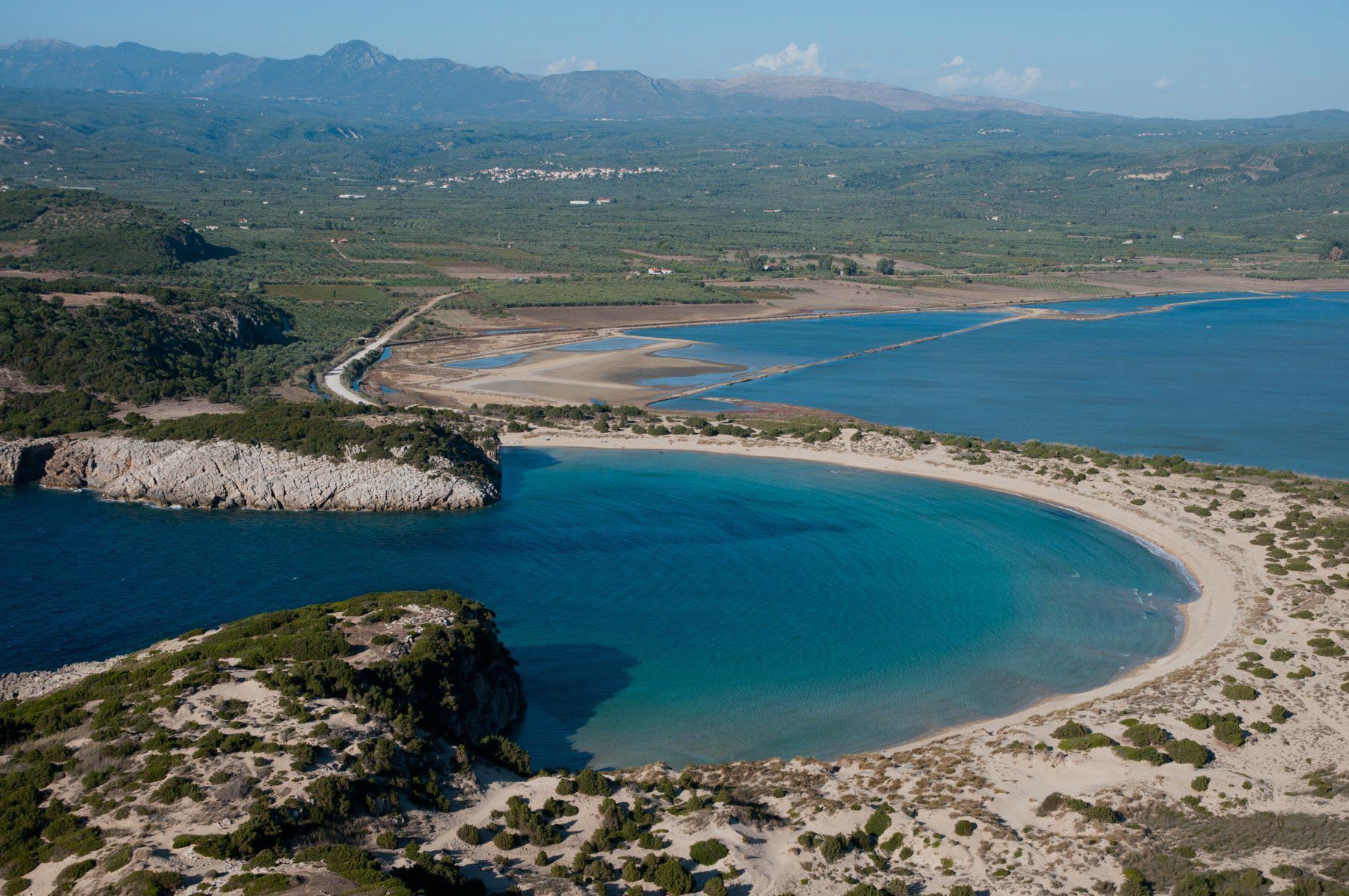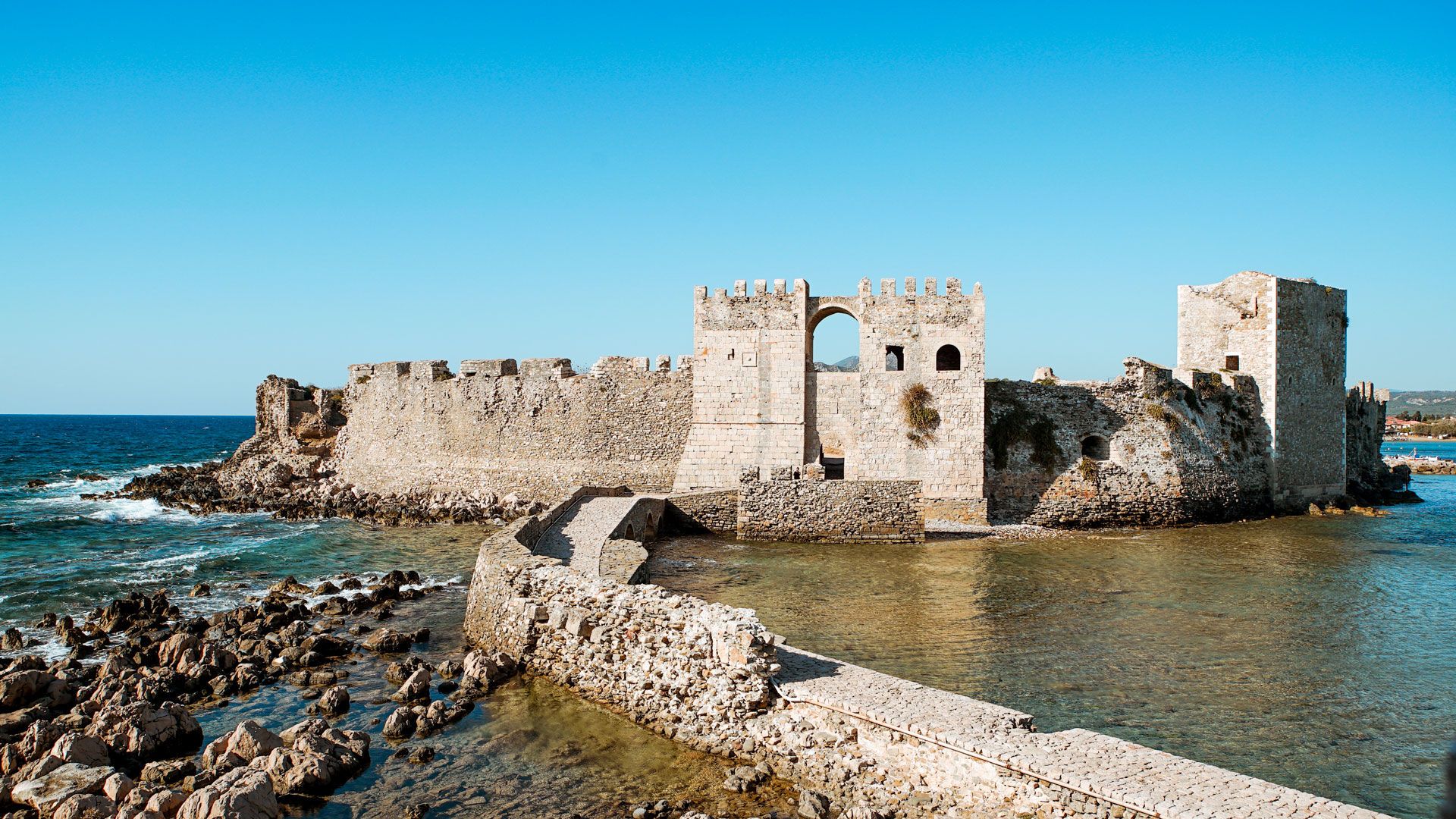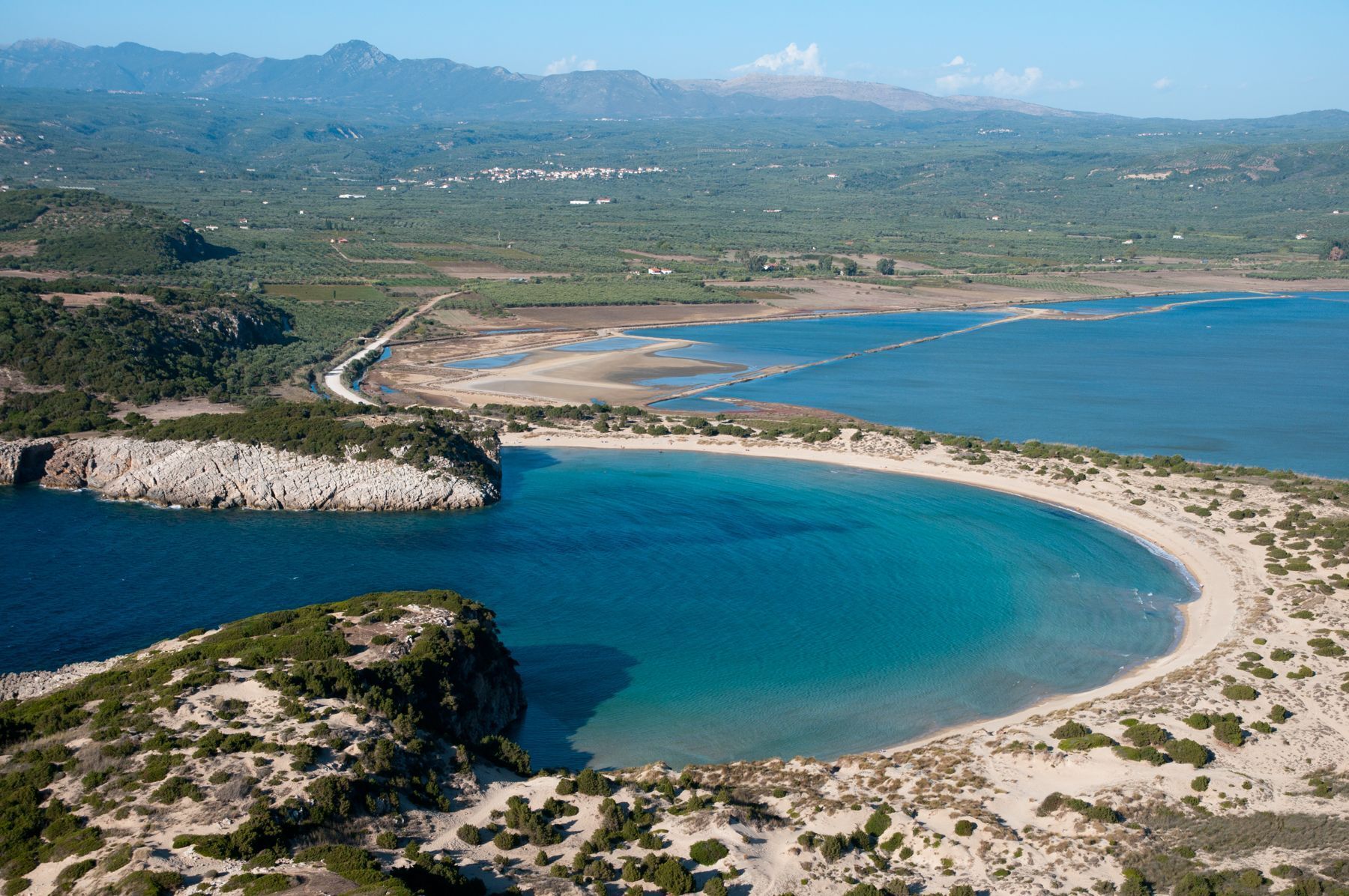Historical
Famous beaches, historic castles, Mycenaean palaces, an important wetland and princely hospitality – all packaged in an ideal holiday destination.
Ancient Messene
Messene is a significant ancient city in terms of its size, form, and state of preservation, and still has much to offer. It possesses not only sanctuaries and public buildings, but also imposing fortifications, and houses and tombs. It enjoys, amongst other things, the advantage of never having been destroyed or covered by later settlements, and is located on an unspoiled inland site. Its natural setting combines the grandeur of the mountains of Delphi with the low-lying, riverine tranquility of Olympia, the dominating bare limestone mass of Ithome, the site of the ancient acropolis, with the low fertile valley around the ancient city.
Pylos Castle – Niokastro
Two castles are built on the summits of the two hills at the ends of the Bay of Navarino, overlooking the town of Pylos: the older castle of Navarino, called Palaiokastron or Palaionavarinon and the more recent castle, called Niokastron. The latter was built in 1573 by the Turks, and in 1686 was given over to the Venetians. It again came under Turkish domination in 1715, along with the castle of Koroni and Palaionavarino. In 1816 it was captured by Ibrahim Pasha and remained under his control until 1828 when it was liberated by the French general Maison. During the Second World War it was used as the seat of the Italian and, later, the German headquarters. Large-scale restoration work has been carried out for many years. The restored hexagonal Fortress on the top of the hill houses the Museum and the Underwater Archaeological Research Centre.
The palace of Nestor
The best preserved of the Mycenaean palaces. It’s a complex of various buildings. It consists of 105 ground floor apartments. It has four main buildings (SW building, central building, NE building, wine store) and some smaller ones. The most important compartments of the palace are the big rectangular “throne room” with its circular hearth, the room with the clay bath tub and the stores with their numerous storage vessels. The walls of the palace were decorated with fine wall paintings.




